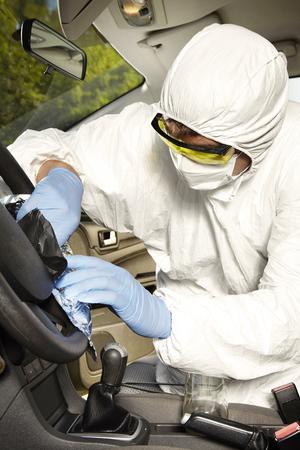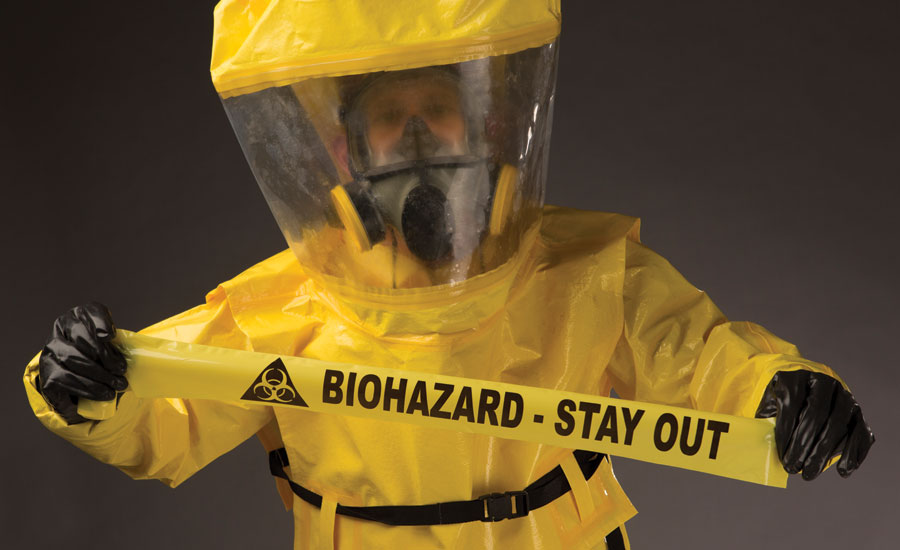Mold Remediation Solutions: Securing Your Residential Or Commercial Property from Mold Damage
Mold Remediation Solutions: Securing Your Residential Or Commercial Property from Mold Damage
Blog Article
Expert Biohazard Cleaning and Purification for Blood, Bodily Fluids, and Hazardous Products
The possible health dangers linked with exposure to biohazards highlight the critical requirement for thorough handling and comprehensive cleaning. As we browse the elaborate landscape of biohazard cleaning, understanding the nuances of guidelines, conformity, and the specialized devices at play comes to be essential in making sure a secure and comprehensive purification process.
Health Dangers of Biohazard Exposure
Exposure to biohazards positions considerable health threats that can lead to serious repercussions for areas and individuals alike. Biohazards incorporate a large range of organic substances, including blood, physical liquids, mold and mildew, bacteria, infections, and other possibly transmittable products. When people come into contact with these biohazards, whether via accidents, inappropriate handling, or ecological direct exposure, they encounter the threat of having major health problems or illness.
Among the main health and wellness dangers connected with biohazard exposure is the transmission of infectious diseases. Bloodborne pathogens such as HIV, liver disease B and C, and numerous microorganisms can be existing in biohazardous products, presenting a direct risk to human health. Inhaling air-borne biohazards like mold and mildew spores or entering into contact with contaminated surfaces can additionally lead to breathing concerns, allergic reactions, and other adverse wellness impacts.
Moreover, biohazard direct exposure can have lasting health and wellness ramifications, with some conditions materializing years after the initial call (Blood Cleanup). For that reason, it is crucial to focus on appropriate biohazard cleansing and purification to reduce these health threats and make sure the safety of neighborhoods and individuals

Specialized Educating for Biohazard Cleanup
When it pertains to handling biohazard clean-up successfully and securely, specialized training plays a fundamental function in making certain proper decontamination treatments are adhered to. Biohazard cleanup needs certain expertise and abilities to efficiently alleviate threats related to bloodborne pathogens, bodily fluids, and harmful products. Specialists educated in biohazard cleaning undergo rigorous instruction on exactly how to safely manage, get rid of, and deal with biohazardous materials to stop contamination and direct exposure.
Specialized training for biohazard cleanup covers a series of important topics, consisting of correct personal safety tools (PPE) usage, bloodborne pathogen awareness, decontamination techniques, and dangerous waste disposal procedures. Individuals learnt biohazard cleanup are equipped with the necessary know-how to examine contamination degrees, determine prospective risks, and execute appropriate cleaning treatments in conformity with regulative standards.
Continuous training and education and learning are extremely important in the area of biohazard clean-up to stay upgraded on the most recent purification innovations, safety methods, and laws. By buying specialized training, biohazard cleanup specialists can properly react to emergency cleaning circumstances and protect both public wellness and the atmosphere.
Significance of Correct Purification Techniques
Making use of appropriate decontamination strategies is important in biohazard cleanup to successfully get rid of hazardous products and minimize wellness dangers. Reliable decontamination not just makes sure the elimination of visible traces of blood, physical fluids, and various other biohazards but additionally targets unnoticeable virus that might posture major wellness threats otherwise properly removed. By following strict purification protocols, trained specialists can considerably minimize the risk of exposure to unsafe microorganisms, viruses, and microorganisms that can result in conditions or infections.
Proper decontamination strategies entail using specific tools and anti-bacterials that are specifically developed to reduce the effects of biohazards properly. Comprehensive cleansing and sanitation of infected areas are vital to protect against the spread of pathogens and ensure a risk-free atmosphere for passengers. In addition, the proper disposal of biohazardous waste following decontamination procedures is important in protecting against contamination of various other surface areas or people.

Tools and Tools for Safe Cleanup
The proper equipment and devices play an essential role in guaranteeing the safe and reliable cleanup of biohazardous you can check here products. When handling blood, bodily liquids, or dangerous materials, biohazard cleansing experts depend on specialized gear to minimize exposure threats and thoroughly decontaminate the damaged location. Personal protective tools (PPE) such as handwear covers, coveralls, safety glasses, and masks are necessary to protect against direct call with possibly infectious products. Additionally, biohazard cleaning kits having anti-bacterials, absorptive products, and biohazard bags are utilized to safely have and get rid of of polluted things. Blood Cleanup.
Advanced cleaning tools like hospital-grade anti-bacterials, HEPA-filtered vacuum cleaners, and misting machines are utilized to disinfect surface areas and remove biohazards efficiently. Specialized devices such as sharps containers and biohazard garbage disposal containers are utilized to safely handle sharp items and biohazardous waste products. By utilizing the right devices and tools, biohazard cleansing professionals can guarantee a detailed cleaning process that prioritizes safety and reduces health and wellness dangers for both workers and passengers of the damaged room.
Rules and Conformity in Biohazard Cleansing
Correct adherence to guidelines and conformity criteria is extremely important in biohazard cleansing to make certain the safety and security of both employees and the setting. Federal government companies such as OSHA (Occupational Security and Health And Wellness Administration) and the EPA (Epa) have established specific standards for biohazard cleaning procedures to decrease wellness dangers and environmental contamination. These policies cover a variety of aspects consisting of the handling, transport, and disposal of biohazardous materials, as well as the necessary training and safety devices required for personnel entailed in the cleaning process.
Biohazard cleaning firms need to stay up-to-date with these laws to ensure that their operations meet the called for security standards. Failing to conform with these regulations can cause serious consequences, consisting of fines, lawsuit, and endangering the wellness of individuals and the environment. By adhering to strict regulations and conformity steps, biohazard cleansing business can effectively alleviate risks and make certain a complete and safe cleanup procedure for all parties entailed.
Conclusion
In verdict, biohazard cleaning and purification require specific training, correct techniques, and adherence to laws. Exposure to blood, bodily liquids, and dangerous products poses considerable health risks, making it crucial to make use of the ideal tools and tools for risk-free cleaning. By following stringent methods and standards, professionals can efficiently alleviate the threats associated with biohazard exposure and make certain the safety of both themselves and others.
As we navigate the elaborate landscape of biohazard cleaning, Discover More recognizing the nuances of policies, compliance, and the specific tools at play comes to be crucial in ensuring a complete and safe decontamination process. (Blood Cleanup)
When it comes to managing biohazard cleaning efficiently and safely, specialized training plays an essential function in making sure appropriate purification procedures are complied with.Using appropriate purification techniques is essential in biohazard clean-up to properly get rid of dangerous products and decrease health and wellness dangers. Additionally, biohazard cleaning packages having disinfectants, absorbent products, and biohazard bags are made use of to securely get rid of and include of infected products.
Federal government firms such as crime scene cleanup regulations OSHA (Occupational Security and Health Administration) and the EPA (Environmental Protection Firm) have developed specific guidelines for biohazard clean-up treatments to minimize health dangers and ecological contamination.
Report this page